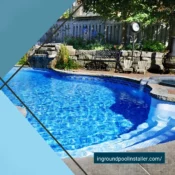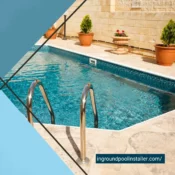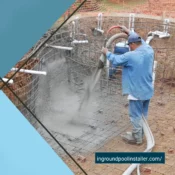How an Inground Pool Installer Ensures Proper Heating and Filtration System Installation

How an Inground Pool Installer Ensures Proper Heating and Filtration System Installation
Installing an inground pool is a significant investment that adds value and enjoyment to your home. Beyond the design and construction, two critical components ensure long-term comfort and cleanliness – the heating and filtration systems. Proper installation of these systems by a professional inground pool installer is essential for maintaining water quality and ensuring your pool stays at the perfect temperature year-round. Here’s how expert installers ensure seamless heating and filtration system integration during pool construction.
1. Assessment and System Selection
The process begins with a detailed assessment of your pool’s size, location, and intended use. An experienced pool installer will recommend heating and filtration systems that are appropriate for your pool’s volume and environmental factors.
- Heating Systems: Pool installers may suggest gas heaters, electric heat pumps, or solar heaters based on your climate and energy preferences. For example, solar heaters are ideal for sunny regions, while gas heaters offer fast heating, perfect for cooler climates.
- Filtration Systems: Options include sand filters, cartridge filters, and diatomaceous earth (DE) filters. Each system varies in cost, maintenance, and filtration efficiency.
Pro Tip: Combining a heat pump with a high-efficiency cartridge filter often results in lower energy costs and better long-term performance.
2. Strategic Placement of Equipment
Proper placement of heating and filtration equipment plays a crucial role in system efficiency and accessibility. Pool installers ensure that the equipment is positioned near the pool but away from high-traffic areas to reduce noise and minimize visual impact. The installer also accounts for adequate ventilation and drainage around heaters to prevent overheating or water damage.
Example: A heat pump placed too far from the pool will lose efficiency due to heat loss along the pipe. Installers carefully calculate the ideal distance to maximize performance.
3. Plumbing and Electrical Integration
Once the systems are selected, the installer integrates them into the pool’s plumbing and electrical framework. This step involves:
- Connecting the filtration system to the pool’s circulation lines, ensuring water is drawn from the pool, filtered, and returned clean.
- Installing heating units with proper bypass valves, allowing water to be heated only when necessary, preventing strain on the system.
- Wiring electrical components according to local codes, ensuring safety and efficiency.
4. Testing and Calibration
After installation, the pool installer conducts thorough testing to ensure the heating and filtration systems operate smoothly. This includes checking for leaks, verifying temperature settings, and ensuring water flows evenly through the filters. Adjustments are made to optimize performance and ensure the system runs at peak efficiency.
5. Ongoing Maintenance Recommendations
A professional pool installer will guide homeowners on routine maintenance, such as cleaning filters, inspecting heaters, and monitoring water chemistry. Regular maintenance extends the lifespan of the heating and filtration systems and ensures consistent performance.
Proper installation of heating and filtration systems is essential for enjoying a clean, comfortable pool throughout the year. By working with a skilled pool installer, you can rest assured that your pool’s vital systems are selected, installed, and maintained to the highest standard. Ready to enhance your pool experience? Consult a professional inground pool installer to ensure your heating and filtration systems provide lasting comfort and efficiency.
All Categories
- Concrete
- Concrete
- Concrete pools
- Construction
- Custom Features and Add-ons
- Design
- Design
- Design
- Design & Construction
- Design and Planning
- Features & Customization
- Infinity edge
- inground pool
- inground pool builder
- inground pool installer
- Installation
- Installation Process
- Legal & Administrative
- Materials
- planning and design
- Pool Aesthetics and Customization
- Pool Design
- Pool Equipment
- Pool Features
- Pool Features
- Pool Installation Process
- Pool Materials
- Pool Materials
- Pool Types
- Project Planning
- Renovation
- Resurfacing
- top sights
- Types of Inground Pools
- Types of Inground Pools
- Types of Inground Pools
- Types of Inground Pools
- Water Treatment



